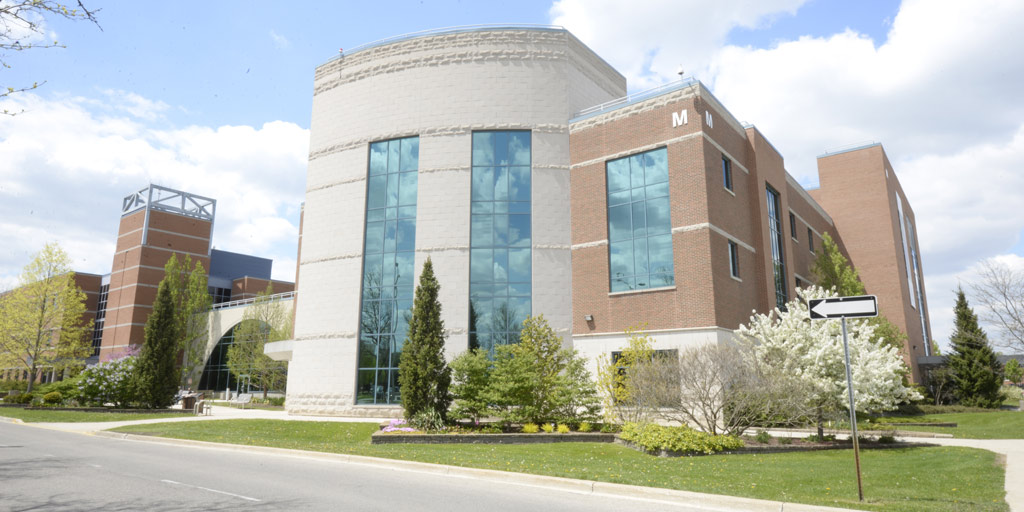Course Contemplation: Public relations and corporate communications
 CREDIT: SIMON DUNFORD
CREDIT: SIMON DUNFORDThe School of Contemporary Media ranks high in Fanshawe's achievements with one of its oldest programs, public relations and corporate communications, being a staple for the school.
With the Fanshawe community poised to celebrate the 50th anniversary of our esteemed college, it is unquestionable that the School of Contemporary Media ranks high on its list of achievements. The public relations and corporate communications program is one of the oldest programs in the School of Contemporary Media and is known for its hands-on teaching methodology.
Commenting on this, Darrien Miller, a first year student of the program, shared her opinion with the Interrobang. “Coming from a university background which was very theoretical, I really enjoy the program because it’s much more hands-on,” she said.
2016 marks the 20th anniversary of the public relations program. Evidently, the program has improved a lot since its inception. The college now runs two intakes in September and January. The January intake started in 2016.
“1996/1997 was the first intake of students, which I was a part of,” Jackie Westelaken, program co-ordinator of the public relations program revealed. “We only had one section and about 30 students.”
Westelaken also noted that the program started only as public relations, while the Ministry of Advanced Education and Skills Development enforced the name change to public relations and corporate communications in fall 2015. She stated that corporate communications was added to reflect the college’s area of specialty.
“This is a great program but as communications and technology changes, and best practices might change, the program has been updated,” Westelaken said.
In Westelaken’s words, the public relations program is a big learning curve. It incorporates graphic design and Internet marketing into the teaching module to balance both corporate and artsy requirements.
“I feel for a lot for international students because there are so many adjustments,” she said. “However, they get through it eventually.”
According to Westelaken, the nice thing about this program is that opportunities are diverse. There are positions in corporate, non-profit, government, healthcare and different industries.
“Every significant organization should have a professional communicator and someone familiar with internal employee communications and dealing with an organization’s public.”
Aside from being a communication specialist, Westelaken mentioned that there are people working in the field as web content specialists, social media strategists, account managers or as a liaison between client and technology teams for project management, rebranding strategy or website development.
“Public relations and corporate communications complements journalism and marketing,” Westelaken noted. “Digital communication, marketing, business management or any program in the School of Contemporary Media will therefore be a logical fit for a second program.”
“The college tracks the graduate success rate for the public relations and corporate communications program through the key performance indicator,” Westelaken said. “Although the response rate is about 50 per cent, half of that number have full-time jobs in the field within six months of graduation.”
Westelaken noted that the statistics might be discouraging because graduates may choose other programs, take the summer off, get married or return to their home country. She also added that graduates of the public relations program do not necessarily have to become professional members of any association before they can practise in their field.
“Students in the second semester automatically become members of the International Association of Business Communicators (IABC). They can also join the Canadian Public Relations Society (CPRS) which is national but has no active chapter in London,” Westelaken said.
Westelaken admonished current and incoming students to be prepared for hard work, lots of assignments and a great experience. “We emulate the real workforce where there are lots of projects and team work going on,” she said.
Miller agreed with Westelaken’s sentiments.
“I am learning a lot in the few weeks that I have been here. I get to apply what I have learnt for four years,” she said.
The public relations program has a minimum field placement of 225 hours, which is important and helpful. Westelaken further advised students to do a lot of research to see the opportunities the program offers and expand their skill sets and experience.
“The program is all about relationships and cultivating the relationships for our students to be able to get the work experience out of the industry,” Westelaken said. “We will be grateful to anybody who hosts the students.”














